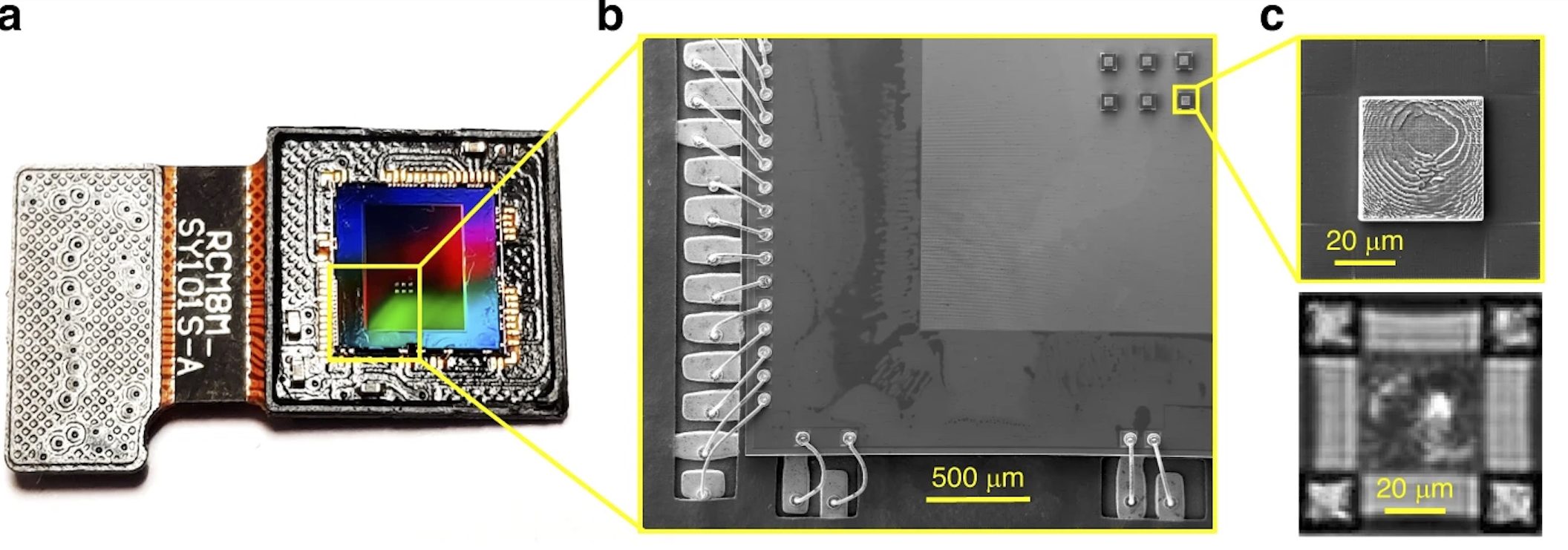While there are a few technologies that allow encryption and decryption of optical signals, skipping the power intensive translation step into electric signal, they are not compatible with flexible authentication schemes such as biometrics.
A collaborative research team lead by Prof. Min Gu and Elena Goi from RMIT University and University of Shanghai for Science and Technology have used 3D nanoprinting to add AI optical elements to industry-standard imaging sensors that allow for flexible unpowered direct encryption and decryption of optical signals. Elena Goi said that “this is comparable to putting tailored, task-specific smart glasses on the imaging sensors, which process the incoming optical information before it is even detected.”
Using this technique it is possible to realise biometrics-compatible AI optical circuits, which not only outperform current optical methods, but have potential in a wide range of fields from cybersecurity through to medical diagnostics, automatic driving and satellite image processing.
Scanning electron microscopy and atomic force microscopy at Microscopy Australia’s linked laboratory, the RMIT Microscopy and Microanalysis Facility, were essential for imaging the nanoscale chips.

a) The industry-standard imaging sensor that was nanoprinted onto, b) scanning electron micrograph of the chip including the printed components (top left), c) close up of the component.
E. Goi et al., Light: Science & Applications 2021 DOI: 10.1038/s41377-021-00483-z
December 17, 2021